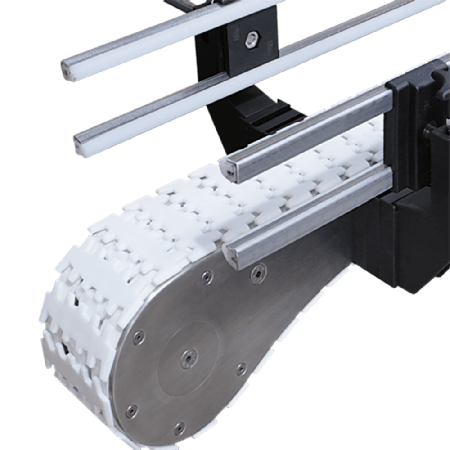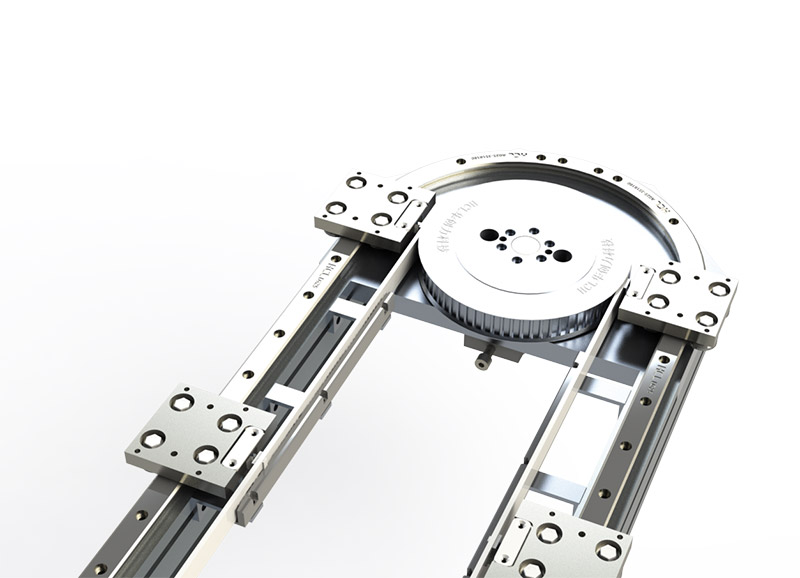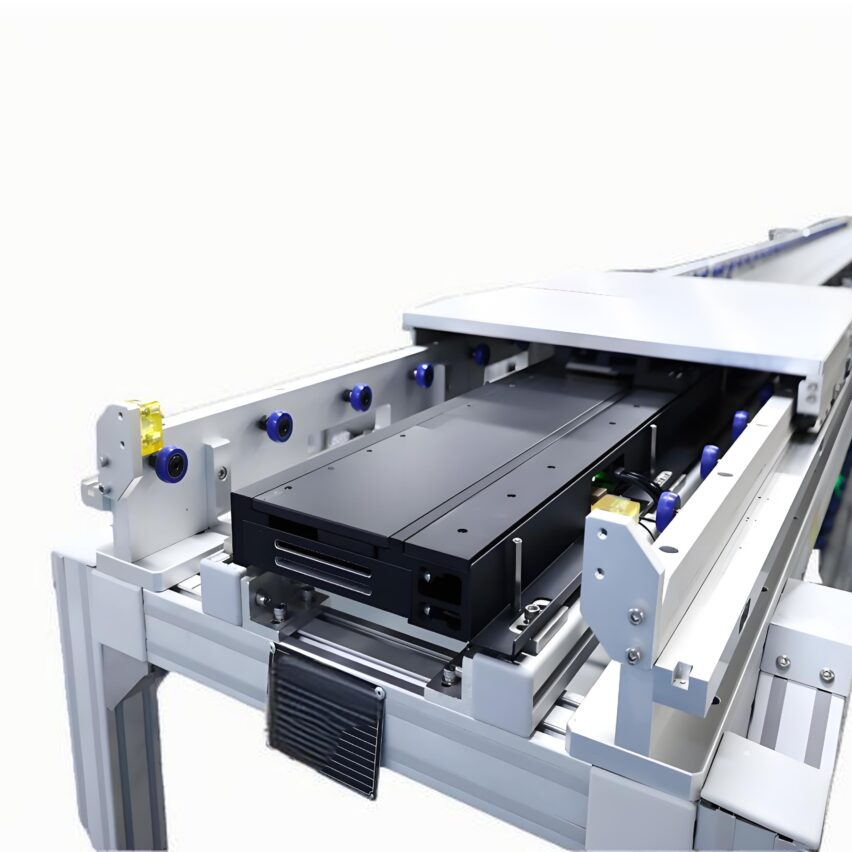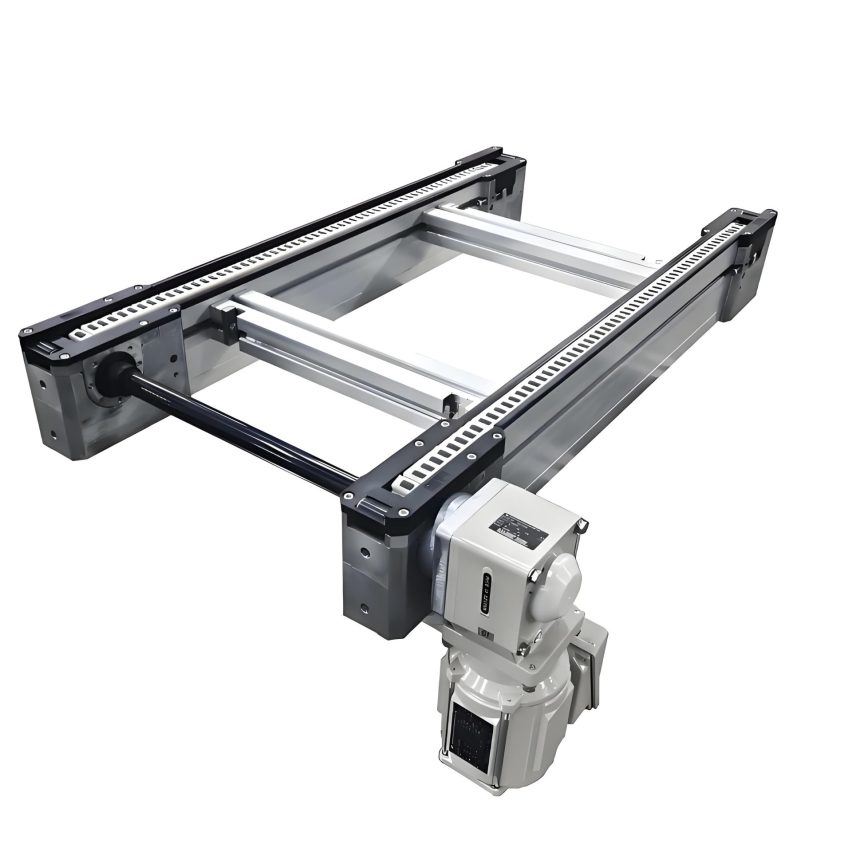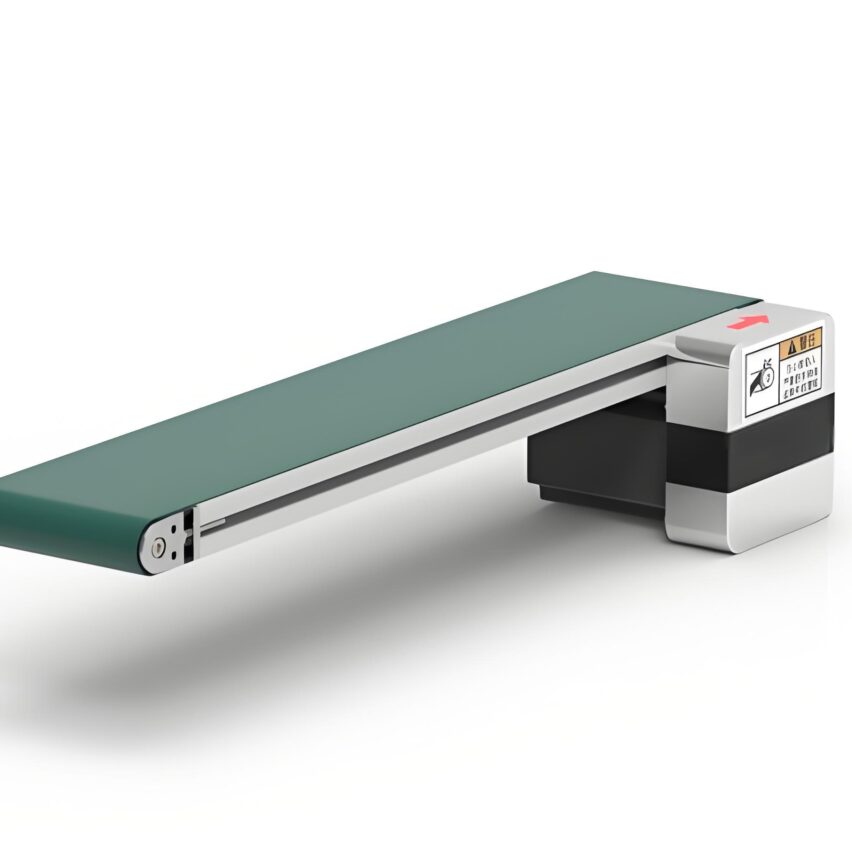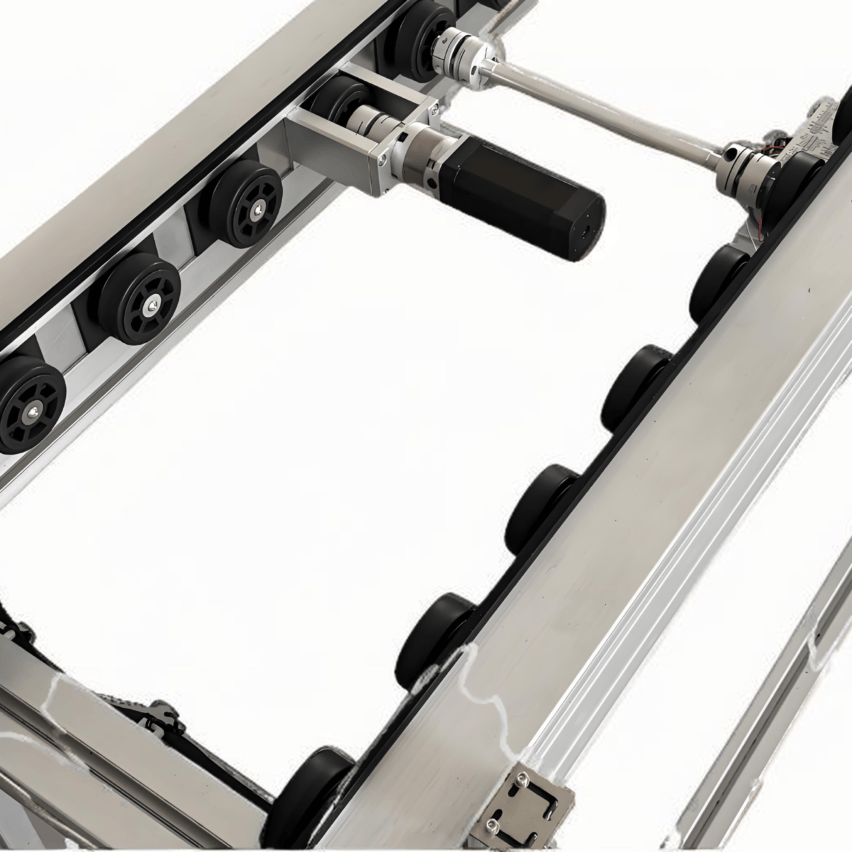In Dongguan, an electronics factory assembly workshop, a 200-metre-long speed chain production line is 1.5 metres per second speed transmission of mobile phone motherboards. When the purchasing manager Lao Zhang received a total quotation of 38 million yuan, his palms seethed with cold sweat - this is equivalent to 19,000 yuan per metre cost, is six times the ordinary roller line. But three months later, he was relieved by the data jumping on the big screen in the workshop.Equipment utilisation rate 98.71 TP3T, andDaily capacity increase of 40%, andDecrease in labour costs 65%This seemingly expensive production line is using efficiency to explain "expensive has its reasons". This seemingly sky-high production line, is using the efficiency of interpretation of the "expensive have expensive reason".
First, the price fog: the mystery of the span from $ 1,000 to $ 10,000
The per-metre offer of the multiplier chain is like a misty forest across theRMB 1,000 to RMB 20,000of the amazing range. This difference is no accident, but is a reflection of the superimposition of multiple technical parameters:
1. Three jumps in material costs
- basic type: Carbon steel frame ($1200-1800/m) - suitable for light load sorting scenarios, but poor corrosion resistance
- industrial grade: Aluminium alloy rail ($2000-5000/m) - mainstream choice, reduces weight by 60% while maintaining strength
- special type: 304 stainless steel ($8,000+/m) - life expectancy is 3-5 times that of carbon steel, resistant to high temperatures of 80°C and acidic and alkaline environments
2. Hidden premiums for drive systems
markdownmake a copy of| Drive Types | Cost Increase | Scenarios | Energy Efficiency Comparison | |------------|----------|-------------------|----------------| | Ordinary motor | Benchmark | Light assembly line | Annual electricity cost 120,000 RMB* | | Servo system | +2000RMB/m | Precision electronic assembly | Energy saving 30%[8](@ref) | | Hydraulic Drive | +$3000/m | Heavy Duty Machine Conveyor | Torque Lift 50% |*Based on 300 days of operation per year for a 100-metre line body.
3. Stacking effect of functional modules
- electrified transport: Increase the cost of 10% to solve mobile power challenges
- Automatic Tensioning: Increase of $800 per metre to reduce the frequency of 30% maintenance
- jack-up transplanting: $1500/m investment in exchange for a 70% increase in space utilisation
A new energy company customised the battery assembly line with anti-static coating and explosion-proof design, costing $25,000 for a single metre, but reducing the safety incident rate to 0.03ppm - which confirms thePremiums for special scenarios are essentially risk hedges.
Second, the cost black hole: those figures not written in the quotation
When the owner of a food factory in Shenzhen chose "recycled steel" chain to save 800 yuan per metre, he did not expect to pay for it six months later:
- 2.7 million in repairs and liquidated damages
- Losses from 45-day shutdown
- Zero customer trust
These hidden costs expose the harsh truth of the industry:
1. Cost formula for material shrinkage
actual cost=quote+(Life expectancy×replacement cost)+Stoppage of production losses
The use of poor quality chains in an automotive plant resulted inWear Rate Enhancement 40%, annual maintenance costs amount to $260,000/100 metres, which is 2.3 times that of a quality chain.
2. Fatal details of installation and commissioning
- 90° sharp turn designSpace-saving but lead to six-month scrapping of the guide wheel, costing an extra $50,000 to replace it.
- Triple Stacking Failure: Maintenance requires demolition of the roof, with a single lifting cost of over $80,000
- Old device compatibility pitfalls: Failure to reserve the interface to the secondary transformation, an electronics factory overpaid $370,000
3. Iceberg model of maintenance costs
Surface visible lubricants, wear parts replacement ($30,000-$50,000 per year) are only the tip of the iceberg, the real killers are:
- Downtime losses: $8,000 - $15,000 per hour
- Precision Decay: Guide rail flatness exceeds 0.1mm, product defective rate soared 2.3%
- energy efficiency waste: Mismatch between chain width and load leads to more electricity burning 40%
Third, the value revolution: the logic of return behind the high unit price
Changzhou, a photovoltaic company spent 36 million (18,000 / m) to build a smart speed chain, with data interpretation of the "expensive is cheap" paradox:
markdownmake a copy of| Indicators | Pre-Reform | Post-Reform | Value Transformation | |--------------|--------|----------|----------------| | Daily production capacity | 800 pieces | 1500 pieces | Annual income increase of 5.4 million | | Electricity consumption | 12.3 kWh/thousand pieces | 8.7 kWh/thousand pieces | Annual saving of 450,000 [8](@ref) | 450 hours | Save $370,000 in annual maintenance costs | Failure Interval | 120 hours | 450 hours | Annual Maintenance Savings of $370,000 | Residual Value | 15% | 45% | Scrap Recovery of $3M | | | Residual Value | 15% | 45% | Recover $3M more at end of life | | Residual Value | 15% | 45%This reward stems from a triple technological empowerment:
1. Economics of space reconstruction
Jiaxing Garment Factory's "Divine Transformation":
- For 2 x 1 metre wide lines read 3 x 0.6 metre narrow lines
- Turning radius reduced from 1.2 metres to 0.8 metres
- 0Capacity increase of 87.51 TP3T under new square footage
2. Life-cycle gaming
304 stainless steel chain is 50% more expensive than carbon steel, but within the 8-12 year life cycle:
- Maintenance costs down 40%
- Residual Value Recovery Multi 30%
- Combined costs backfire on low-quality equipment
3. The fission effect of the smart premium
The addition of IoT sensors ($500 for a single point) brings:
- Predictive maintenanceReduction of 30% invalid overhaul
- Early detection of faults >85%
- Annual saving of $20,000/point in labour inspection costs
Fourth, shopping for the art of war: smart people's cost control techniques
Strategy 1: Laddering Quotes(Avoiding functional redundancy)
- basic version: $5,000/m (no rustproofing, general workshop)
- Standard Edition: $8,000/m (including galvanising, electronics workshop)
- industrial grade: $12,000/m (explosion-proof + self-lubricating, new energy)
Strategy 2: Full Life Cycle Cost Formula
total costs=procurement price+∑(maintenance fee×rebateshastyn)-salvage value
A packaging plant according to this discovery: expensive 20% equipment for 5 years to counter-earn 1.2 million.
Strategy 3: The balance of off-standard customisation
- Add $500-2000 per metre for customisation
- However, it can save 30% modification fee (Example: save $220,000 by investing an extra $80,000 in explosion-proof line)
key trick: Require vendors to provide a List of Hidden Costs to be listed:
- High-temperature environment modification costs
- Cross-floor installation fee
- Old line compatibility commissioning fee
V. Future cost curve: turning point in 2025
Two major changes will reshape the cost structure, according to Hannover Messe Technology Foresight:
1. Downscaling of self-healing materials
- microencapsulation: Automatic Release Polyurethane Repair Compound for Knuckle Cracks
- Maintenance Costs Directly Reduced 60%(compared to conventional welding repairs)
- Commercialisation expected in 2026
2. Preventive economics of digital twins
By collecting 12-dimensional parameters such as motor current and chain temperature:
- Virtual Debugging Reduces 30% Losses in Live Machines
- Mass production ramp-up from 3 weeks to 5 days
- New Product Introduction Failure Rate Drops 58%
Industry prediction: when the cost of IoT sensors breaks $300/point, the full life cycle cost of the smart multiplier chain will beFor the first time, below mechanical conveyor lines--This marks the entry of precision manufacturing into the era of "every second counts".
Self-questioning: six questions about the price of speed chains
Q1: Can SMEs afford multiplier chains?
selectableSingle Speed Chain(lower cost than triplex 40%) orUsed Retrofit Lines(Price cut in half), ROI is better for >100,000 pieces per year.
Q2: Does the price quoted per metre include installation?
Usually not included! Foundation installation accounts for purchase price of 5%-8%, with an additional charge of $20,000-$50,000 per floor across floors.
Q3: Which industries must use high-end models?
Electronic factories need anti-static coating (anti-chip breakdown), new energy sources need explosion-proof design (anti-flammable), and the food industry selects stainless steel (FDA approved).
Q4: How can I avoid out-of-control maintenance costs?
adoptionCeramic Roller(Lifetime x 2).Self-lubricating chain(Maintenance cycle extended to 3 months).AGV collaborative maintenance(minus 60% labour).
Q5: When should I choose to customise?
When existing programmes result:
- Waste of space>30%
- Changeover time > 4 hours
- Compatible Modification Fee Over Total 20%
Q6: Will the price be reduced in the future?
The basic model has bottomed out ($1,000), but the smart model will come down in price due to sensor mass production - industrial grade with IoT capability line body is expected to come down to $10,000/meter by 2027.
Standing in the digital war room of a sanitary ware factory in Zhejiang, the multiplier chain that creates 120,000 yuan of output value per hour is running silently. Its procurement costs have long been covered by the efficiency dividend of 0.3 yuan per product - which confirms the new axiom of manufacturing.The true meaning of production line cost is not in the depreciation column of the accounting book, but in the utilisation data on the shop floor screen.When China's manufacturing shifts from "scale competition" to "efficiency war". When China's manufacturing from the "scale competition" to "efficiency war", the price game of the speed chain is essentially a competition for the right to survive.




